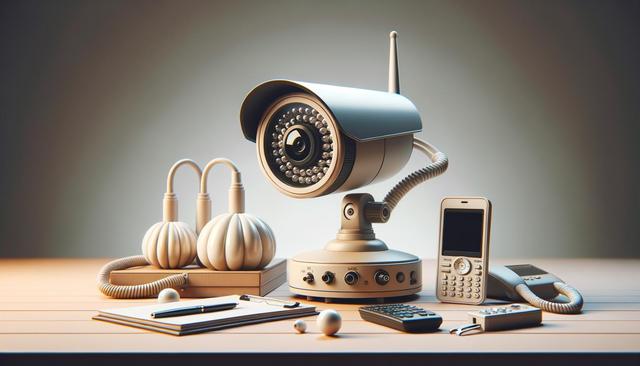High-Definition and Ultra HD Video Quality
One of the most noticeable advancements in surveillance technology is the improvement in video resolution. Today’s surveillance cameras are commonly equipped with high-definition (HD) or ultra-high-definition (UHD) capabilities. These enhanced resolutions allow for clearer and more detailed footage, which is especially valuable in identifying individuals or vehicle license plates. The difference between standard definition and HD can be critical when reviewing footage for security incidents.
Many modern systems now support 4K resolution, offering much sharper images. Some benefits of high-resolution video include:
- Improved facial recognition capabilities
- Greater detail in low-light or challenging weather conditions
- Better zooming with minimal loss of clarity
These features make HD and UHD cameras suitable for both residential and commercial applications, providing a clear advantage in monitoring and evidence collection.
Night Vision and Low-Light Performance
Another major improvement in surveillance cameras is their ability to function effectively in low-light or nighttime conditions. Infrared (IR) technology and low-light sensors have made it possible for cameras to record clear footage even when visibility is minimal. This is crucial for 24/7 surveillance, especially in outdoor or unlit areas.
There are different technologies used to enhance night vision capabilities:
- Infrared LEDs that illuminate the area invisibly to the human eye
- Starlight sensors that amplify ambient light for better clarity
- Thermal imaging for detecting heat signatures in complete darkness
With these technologies, surveillance cameras can maintain effective performance regardless of the time of day, significantly improving overall security coverage.
Smart Motion Detection and Alerts
Modern surveillance cameras often come equipped with intelligent motion detection features. Unlike older models that simply detect movement, advanced systems now use algorithms to distinguish between various types of motion. This reduces false alarms caused by animals, weather elements, or moving shadows.
Smart motion detection can be customized to trigger alerts only when specific types of movement are detected, such as human movement or vehicles entering a designated area. Features typically include:
- Custom motion zones for targeted surveillance
- Real-time push notifications to mobile devices
- Integration with alarm systems or smart home hubs
These capabilities allow users to respond quickly to potential threats and reduce the need for constant manual monitoring.
Cloud Storage and Remote Access
Gone are the days of relying solely on physical storage devices like DVRs or memory cards. Many surveillance systems now offer cloud-based storage solutions, enabling more flexible and secure access to recordings. Cloud storage allows users to review footage from anywhere, using a smartphone, tablet, or computer.
Advantages of cloud storage and remote access include:
- Real-time monitoring from any location
- Secure, off-site backup of video files
- Scalable storage options based on user needs
Some systems also allow users to share video clips directly from the cloud, which is particularly useful for providing evidence to authorities or sharing alerts with neighbors or colleagues.
AI Integration and Video Analytics
Artificial Intelligence (AI) is playing a growing role in enhancing surveillance camera functionality. AI-powered video analytics can interpret and analyze video data in real-time, offering insights that go beyond simple monitoring. These systems can detect patterns, identify unusual behaviors, and automate decision-making processes.
Common AI-based features found in advanced surveillance cameras include:
- Facial recognition for access control and identification
- License plate recognition for vehicle tracking
- Behavior analysis to identify loitering or crowd formation
These features not only improve the effectiveness of surveillance but also help in proactive security management. For instance, AI can trigger an alert when a person enters a restricted area or if a crowd begins to form unexpectedly in a public space.
Conclusion: Enhancing Security with Modern Surveillance Technology
Today’s surveillance cameras offer far more than simple recording capabilities. With high-definition video, night vision, smart motion detection, cloud storage, and AI-powered analytics, they provide a comprehensive toolkit for enhancing security in a wide range of settings. Whether for home security, business monitoring, or public safety, these advanced features help users stay informed and prepared. As technology continues to evolve, surveillance systems are likely to become even more capable and accessible, making them a valuable asset for those seeking effective and reliable security solutions.


